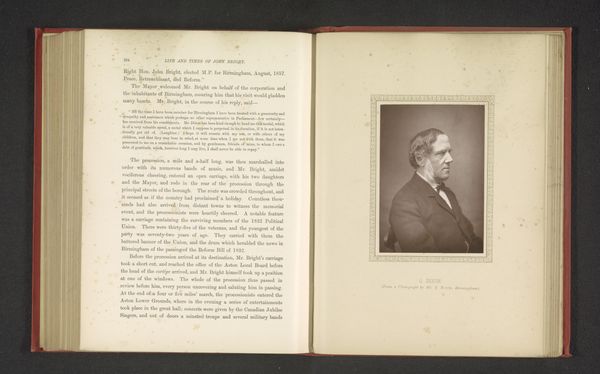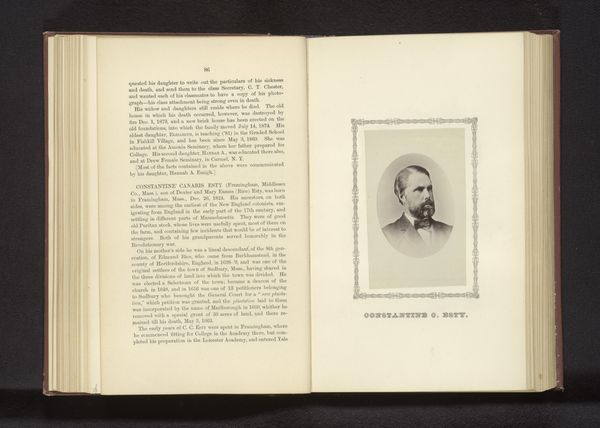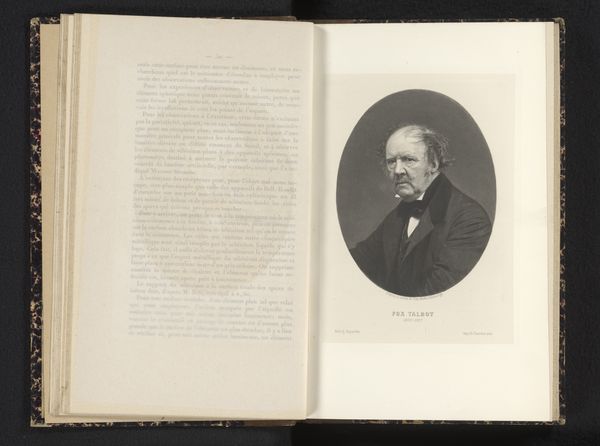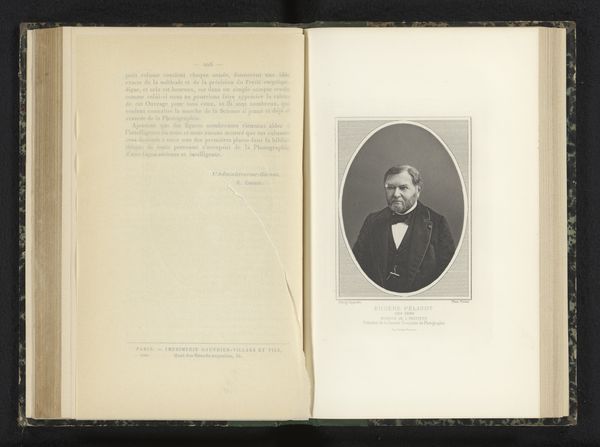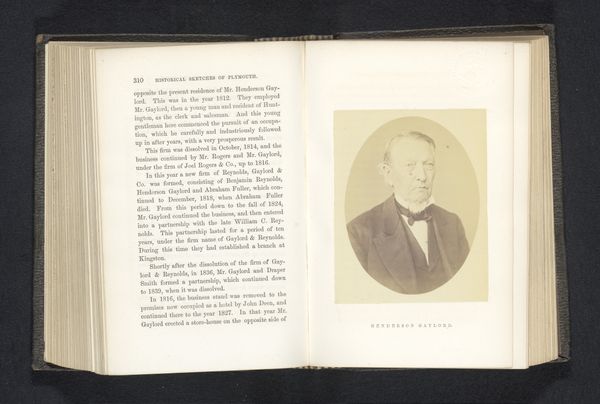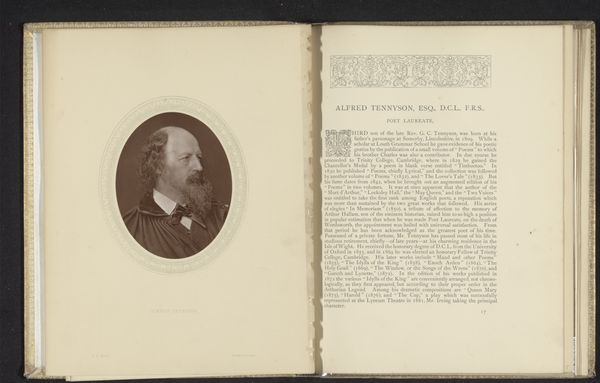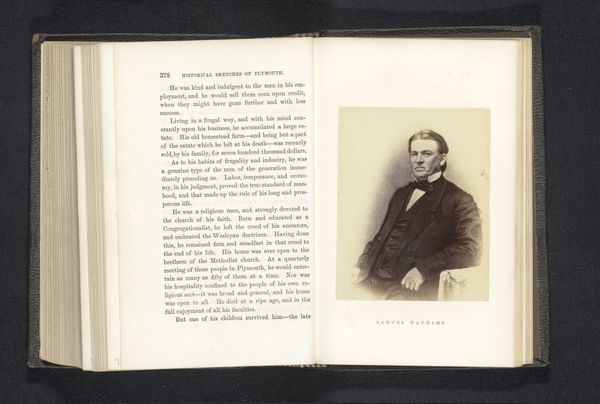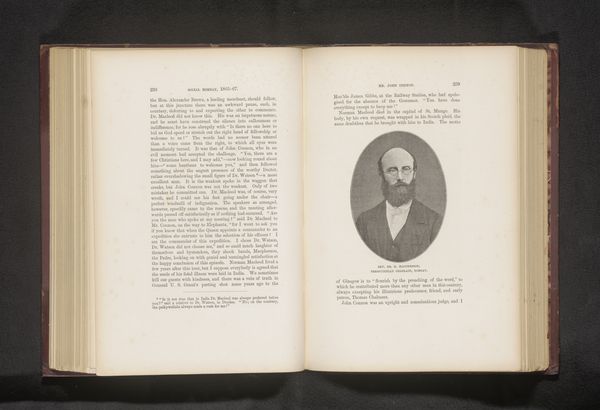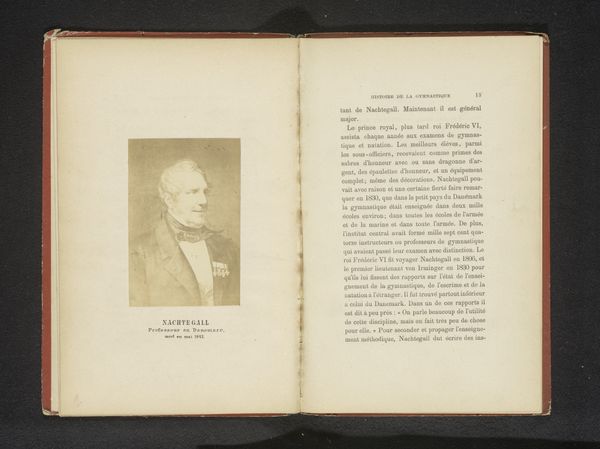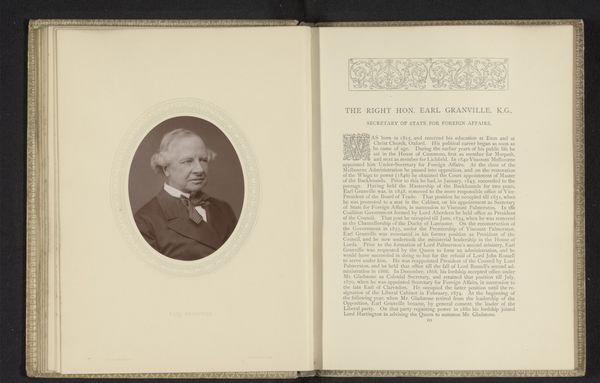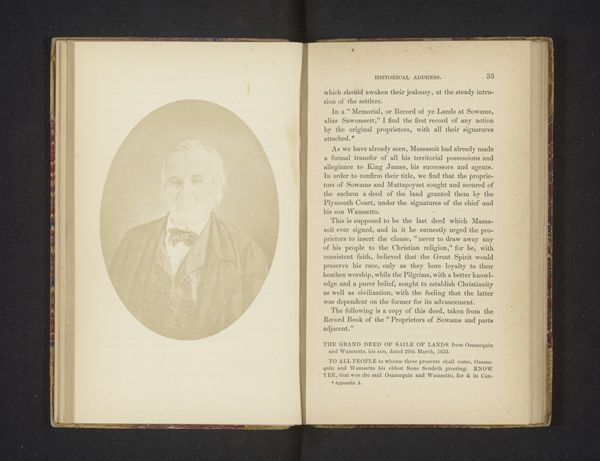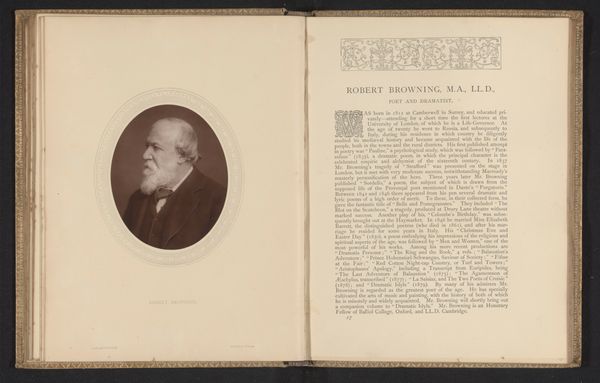
print, photography
# print
#
photography
#
history-painting
Dimensions: height 98 mm, width 64 mm
Copyright: Rijks Museum: Open Domain
Curator: Editor: Here we have an image of a book, open to a page featuring a photographic portrait of James C. Tappan. It's dated before 1881 and listed as a print. It seems quite…formal. The framing and the typesetting around the image speak to a very specific era. What can you tell me about this? Curator: Well, consider the means of production. This isn't a singular painting commissioned for a wealthy patron. It's a photographic print, reproduced presumably for wider circulation, bound within a book. The social context is crucial here. Who was James C. Tappan? What was the purpose of this publication? How does the mass production of images like this affect our understanding of portraiture? Editor: So you're saying it’s less about the individual and more about the infrastructure that allowed his image to be disseminated? Were such books like these common then? Curator: Precisely. Think about the labor involved. From the photographer and printer to the typesetters and bookbinders, a whole network contributed to the creation and distribution of this image. How might this collaborative, and potentially exploitative, process challenge the traditional notion of the artist as a singular genius? Moreover, what implications did the relative affordability of this process hold for memorializing subjects of this era compared to prior ones? Editor: That's fascinating! It really shifts the focus from the subject to the conditions that made the image possible. I never would have thought of it that way looking at this photo in a book! Curator: It’s important to remember the materials too – the paper, the ink, the photographic chemicals – all sourced, processed, and brought together through complex industrial and social systems. What narratives about technological development and consumption does the materiality of this image evoke? Editor: I understand, like each part has its own labor story. I’ll definitely keep this in mind for my paper. Thanks for illuminating the often overlooked side of art making! Curator: Indeed. Examining these details opens our eyes to new narratives around access, privilege, and how a cultural memory becomes constructed, mediated by both technology and by economic systems.
Comments
No comments
Be the first to comment and join the conversation on the ultimate creative platform.
